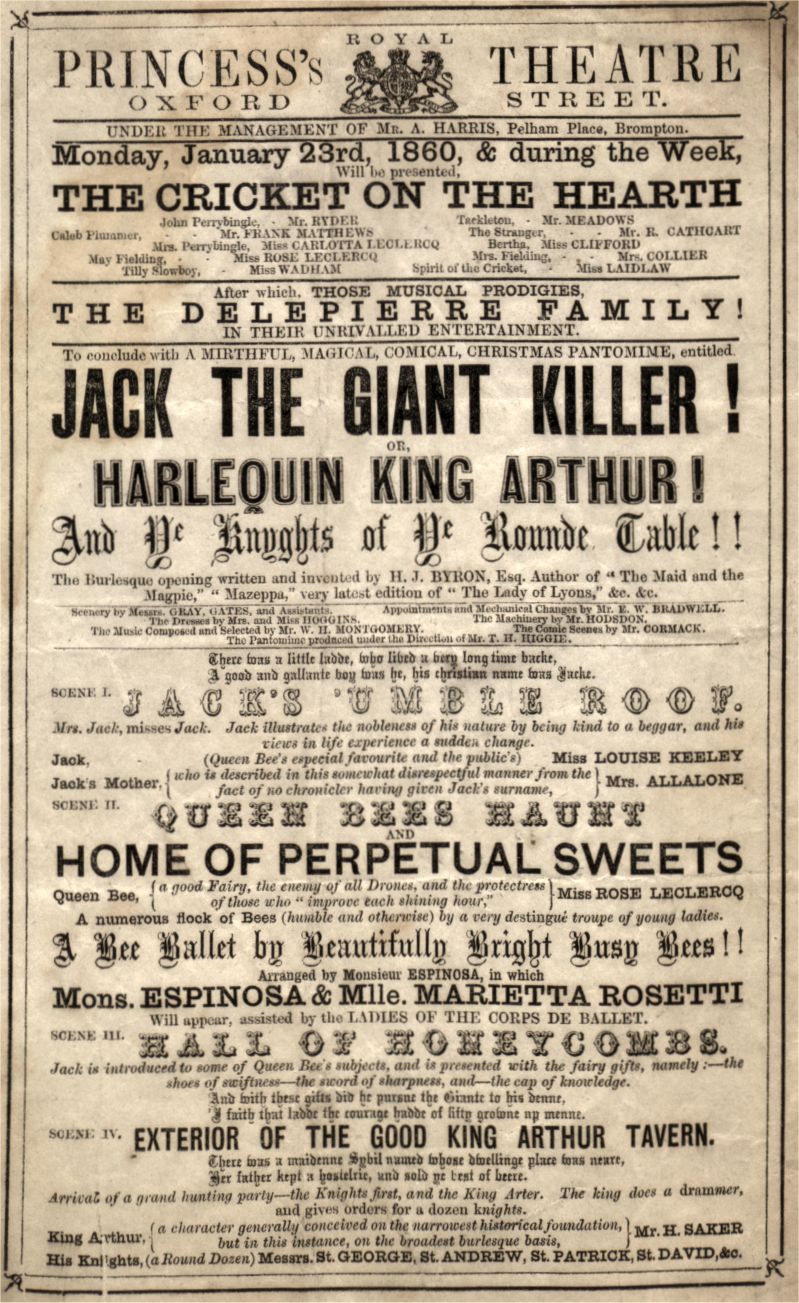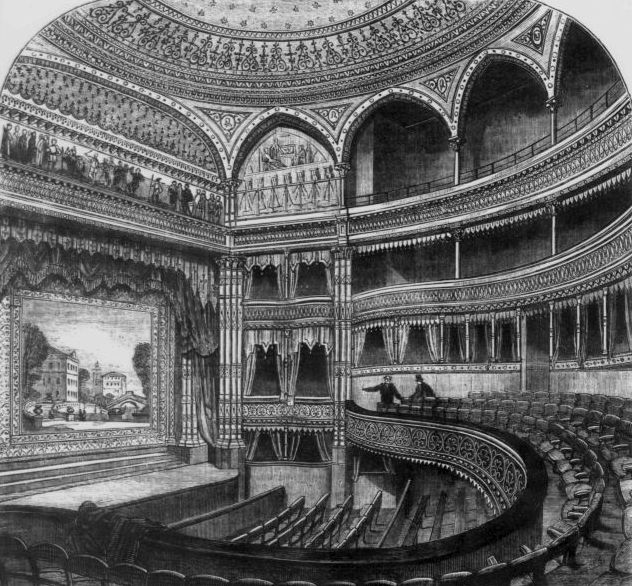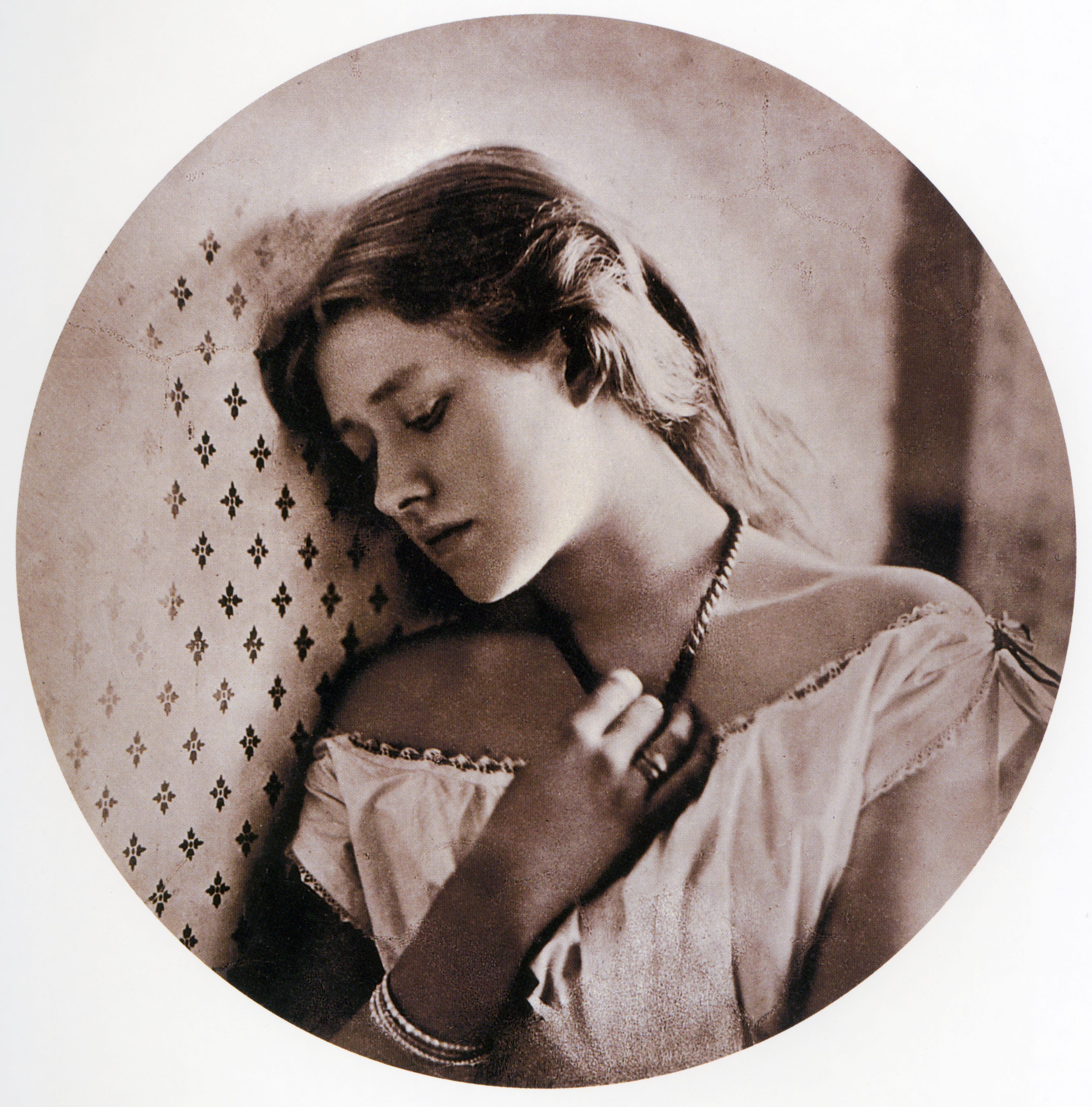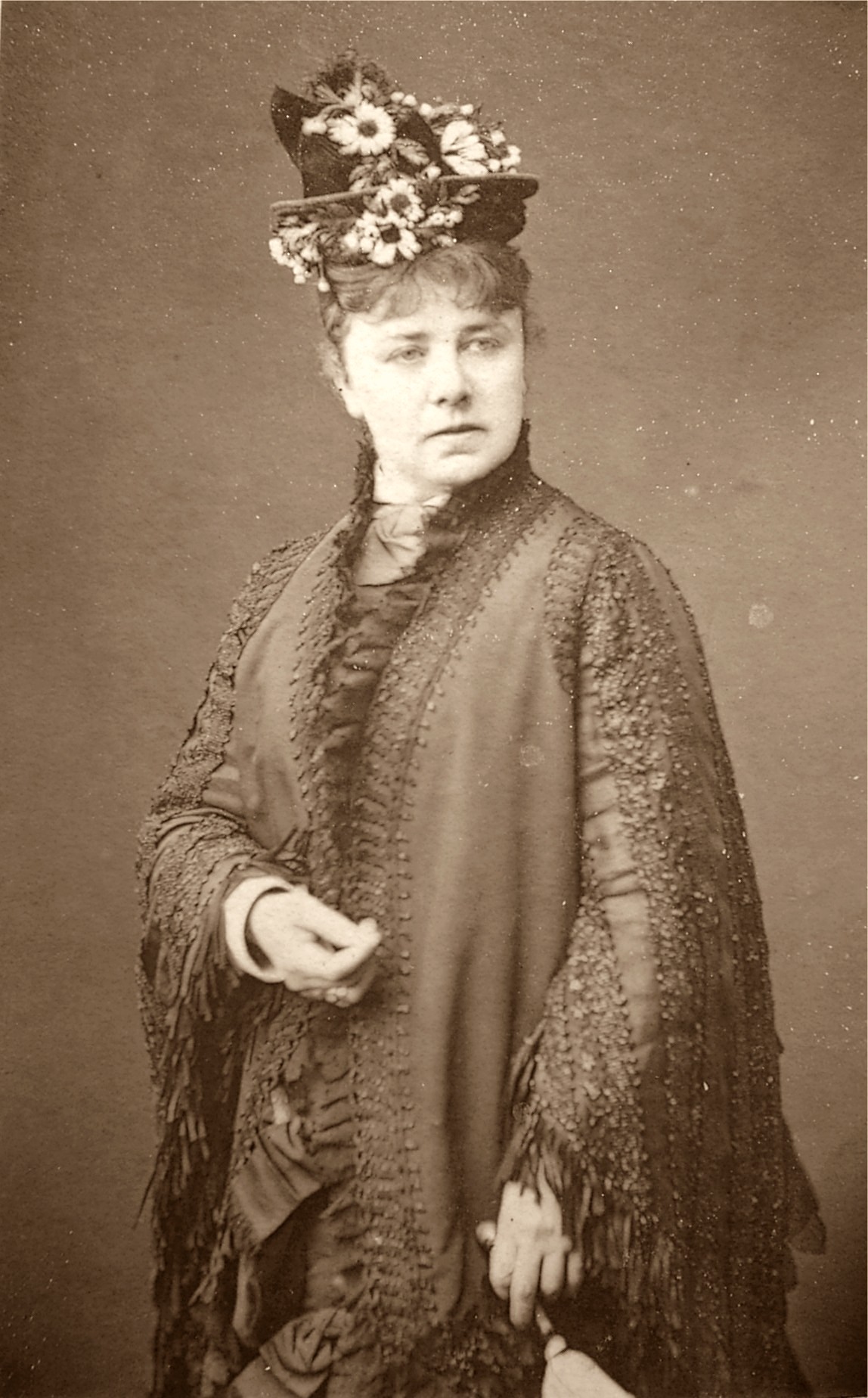|
Royal Strand Theatre
The Royal Strand Theatre was located in the Strand in the City of Westminster. The theatre was built on the site of a panorama in 1832, and in 1882 was rebuilt by the prolific theatre architect Charles J. Phipps. It was demolished in 1905 to make way for Aldwych tube station. History From 1801, Thomas Edward Barker set up a rival panorama to his father's in Leicester Square, at 168/169 Strand. On the death of Robert Barker, in 1806, his younger brother, Henry Aston Barker took over management of the Leicester Square rotunda. In 1816, Henry bought the panorama in the Strand, which was then known as Reinagle and Barker's Panorama,Sherson, Erroll, ‘Lost London Playhouses’, ''The Stage'', 28 June 1923, p. 21. One of a series of articles later published in a book of same name in 1925. and the two panoramas were then run jointly until 1831. Their building was then used as a dissenting chapel and was purchased by Benjamin Lionel Rayner, a noted actor, in 1832.''From Stage to Plat ... [...More Info...] [...Related Items...] OR: [Wikipedia] [Google] [Baidu] |
A Chinese Honeymoon
''A Chinese Honeymoon'' is a musical comedy in two acts by George Dance, with music by Howard Talbot and additional music by Ivan Caryll and others, and additional lyrics by Harry Greenbank and others. One song that originated in the show was "Mister Dooley" which became famously associated with '' The Wizard of Oz'' for decades, when John Slavin, in the title role, interpolated the song for much of the first year of its run. The piece opened at the Theatre Royal in Hanley, England on 16 October 1899 and then toured extensively. After that, it played at the Royal Strand Theatre in London, managed by Frank Curzon, opening on 5 October 1901 for an astonishing run of 1,075 performances. It also played at the Casino Theatre, in New York, opening on 2 June 1902 for a run of 376 performances. In London, Lily Elsie took over the role of Princess Soo-Soo from Beatrice Edwards in early 1903 and was in turn succeeded by Kate Cutler. It also starred Louie Freear, and Arthur Williams t ... [...More Info...] [...Related Items...] OR: [Wikipedia] [Google] [Baidu] |
Douglas William Jerrold
Douglas William Jerrold (London 3 January 18038 June 1857 London) was an English dramatist and writer. Biography Jerrold's father, Samuel Jerrold, was an actor and lessee of the little theatre of Wilsby near Cranbrook in Kent. In 1807 Douglas moved to Sheerness, where he spent his childhood. He occasionally took a child part on the stage, but his father's profession held little attraction for him. In December 1813 he joined the guardship ''Namur'', where he had Jane Austen's brother Charles Austen as captain, and served as a midshipman until the peace of 1815. He saw nothing of the war save a number of wounded soldiers from Waterloo, but he retained an affection for the sea. The peace of 1815 ruined Jerrold's father; on 1 January 1816 he took his family to London, where Douglas began work as a printer's apprentice, and in 1819 he became a compositor in the printing-office of the ''Sunday Monitor''. Several short papers and copies of verses by him had already appeared in the ... [...More Info...] [...Related Items...] OR: [Wikipedia] [Google] [Baidu] |
Burletta
In theater and music history, a burletta (Italian, meaning "little joke", sometimes burla or burlettina) is a brief comic opera. In eighteenth-century Italy, a burletta was the comic intermezzo between the acts of an ''opera seria''. The extended work Pergolesi's ''La serva padrona'' was also designated a "burletta" at its London premiere in 1758. In England, the term began to be used, in contrast to burlesque, for works that satirized opera but did not employ musical parody. Burlettas in English began to appear in the 1760s, the earliest identified as such being '' Midas'' by Kane O'Hara, first performed privately in 1760 near Belfast, and produced at Covent Garden in 1764. The form became debased when the term ''burletta'' began to be used for English comic or ballad operas, as a way of evading the monopoly on "legitimate drama" in London belonging to Covent Garden and Drury Lane. After the passage of the Theatres Act of 1843, which repealed crucial regulations of the Licen ... [...More Info...] [...Related Items...] OR: [Wikipedia] [Google] [Baidu] |
William Brough (writer)
William Brough (28 April 1826 – 13 March 1870) was an English writer. As a dramatist, he wrote some of the earliest German Reed Entertainments, as well as Victorian burlesques, farces and other pieces. Life and works Brough was born in London, the son of Barnabas Brough, a brewer, publican, wine merchant and later dramatist, and his wife Frances Whiteside, a poet and novelist. He was the brother of writer Robert (father of actress Fanny Brough), actor Lionel and science writer John Cargill Brough. His father was briefly kidnapped by the Chartists in 1839 and was a prosecution witness at the trial of the Chartist leader John Frost, which resulted in Frost's deportation to Australia. The family was ostracised and ruined financially as a result, and they moved to Manchester in 1843.Banerji, Nilanjana "Brough, Lionel (1836–1909)" ''Oxford Dictionary of National Biography'', Oxford University Press, 2004 accessed 25 May 2009 Brough was educated at Newport, Monmouthshire, ... [...More Info...] [...Related Items...] OR: [Wikipedia] [Google] [Baidu] |
Henry James Byron
Henry James Byron (8 January 1835 – 11 April 1884) was a prolific English dramatist, as well as an editor, journalist, director, theatre manager, novelist and actor. After an abortive start at a medical career, Byron struggled as a provincial actor and aspiring playwright in the 1850s. Returning to London and beginning to study for the bar, he finally found playwriting success in burlesques and other punny plays. In the 1860s, he became an editor of humorous magazines and a noted man-about-town, while continuing to build his playwriting reputation, notably as co-manager, with Marie Wilton, of the Prince of Wales's Theatre. In 1869, he returned to the stage as an actor and, during the same period, wrote numerous successful plays, including the historic international success, '' Our Boys''. In his last years, he grew frail from tuberculosis and died at the age of 49. Biography Byron was born in Manchester, England, the son of Henry Byron (1804–1884, second cousin to the po ... [...More Info...] [...Related Items...] OR: [Wikipedia] [Google] [Baidu] |
Gaiety Theatre, London
The Gaiety Theatre was a West End theatre in London, located on Aldwych at the eastern end of the Strand. The theatre was first established as the Strand Musick Hall in 1864 on the former site of the Lyceum Theatre. In 1868, it became known as the Gaiety Theatre and was, at first, known for music hall and then for musical burlesque, pantomime and operetta performances. From 1868 to the 1890s, it had a major influence on the development of modern musical comedy. Under the management of John Hollingshead until 1886, the theatre had early success with ''Robert the Devil'', by W. S. Gilbert, followed by many other burlesques of operas and literary works. Many of the productions starred Nellie Farren. Hollingshead's last production at the theatre was the burlesque '' Little Jack Sheppard'' (1885–86), produced together with his successor, George Edwardes. Edwardes's first show, '' Dorothy'', became a long-running hit. In the 1880s and 90s, the theatre had further success w ... [...More Info...] [...Related Items...] OR: [Wikipedia] [Google] [Baidu] |
Royalty Theatre
The Royalty Theatre was a small London theatre situated at 73 Dean Street, Soho. Established by the actress Frances Maria Kelly in 1840, it opened as Miss Kelly's Theatre and Dramatic School and finally closed to the public in 1938.Royalty Theatre at the Arthur Lloyd site accessed 23 March 2007 The architect was . The theatre's opening was ill-fated, and it was little used for a decade. It changed its name twice and was used by an opera company, amateur drama companies and for French pieces. In 1861, it was renamed the New Royalty Theatre, and the next year it was leased by Mrs |
Prince Of Wales's Theatre
The Scala Theatre was a theatre in Charlotte Street, London, off Tottenham Court Road. The first theatre on the site opened in 1772, and the theatre was demolished in 1969, after being destroyed by fire. From 1865 to 1882, the theatre was known as the Prince of Wales's Theatre (not to be confused with Prince of Wales Theatre). Origins The theatre began on this site as The New Rooms where concerts were performed, in Charlotte Street, in 1772, under the management of Francis Pasquali. Popularity, and royal patronage led to the building's enlargement by James Wyatt, and its renaming as the King's Concert Rooms (1780–1786). It then became Rooms for Concerts of Ancient Music and Hyde's Rooms (1786–1802, managed by ''The Directors of Concerts and Ancient Music''). In 1802, a private theatre club managed by Captain Caulfield, the ''"Pic-Nics"'', occupied the building and named it the Cognoscenti Theatre (1802–1808). It became the New Theatre (1808–1815) and was extended an ... [...More Info...] [...Related Items...] OR: [Wikipedia] [Google] [Baidu] |
Marie Wilton
Marie Effie Wilton, Lady Bancroft (1839–1921) was an English actress and theatre manager. She appeared onstage as Marie Wilton until after her marriage in December 1867 to Squire Bancroft, when she adopted his last name. Bancroft and her husband were important in the development of Victorian era theatre through their presentation of innovative plays at the London theatres that they managed, first the Prince of Wales's Theatre and later the Haymarket Theatre. Life and career Bancroft was born at Doncaster, and as a child appeared on the stage with her parents, who were both actors. Among her early parts was that of Fleance in ''Macbeth'' (1846). She made her London début on 15 September 1856, at the Lyceum Theatre, as the boy Henri in ''Belphegor'', playing the same night in ''Perdita; or, the Royal Milkmaid''. She won great popularity in several boy roles, in burlesques at various theatres, as Cupid in two different plays, and notably as Pippo, in ''The Maid and the Ma ... [...More Info...] [...Related Items...] OR: [Wikipedia] [Google] [Baidu] |
Greenwich Theatre
Greenwich Theatre is a local theatre located in Croom's Hill close to the centre of Greenwich in south-east London. Theatre first came to Greenwich at the beginning of the 19th century during the famous Eastertide Greenwich Fair at which the Richardson travelling theatre annually performed. The current Greenwich Theatre is the heir to two former traditions. It stands on the site of the Rose and Crown Music Hall built in 1855 on Crooms Hill at the junction with Nevada Street. However, it takes its name from the New Greenwich Theatre built in 1864 by Sefton Parry on London Street, opposite what was then the terminus of the London and Greenwich Railway. Richardson's travelling theatre At the beginning of the 19th century, Richardson's travelling theatre made its annual tented appearance during the famous Eastertide Greenwich Fair. In ''Sketches by Boz'', Charles Dickens reminisced enthusiastically, "you have a melodrama (with three murders and a ghost), a pantomime, a comic son ... [...More Info...] [...Related Items...] OR: [Wikipedia] [Google] [Baidu] |
Eleanor Bufton
Eleanor Bufton (2 June 1842 – 9 April 1893) was a Welsh actress of the Victorian era. She began acting in her teens and spent most of her career in London, playing in Shakespeare, Victorian burlesque, and a range of drama and comedy roles. Early life and work Bufton was born in Llanbister, Wales, to Mary Bufton.Joseph Knight, ‘Bufton, Eleanor (1842–1893)’, rev. J. Gilliland, ''Oxford Dictionary of National Biography'', Oxford University Press, 2004; online edn, January 200accessed 25 January 2015/ref> Her acting debut at the age of 14 was as a chambermaid in ''The Clandestine Marriage'' in Edinburgh, Scotland. In 1854 she acted in ''Honour before Titles'' at the St. James's Vanette. She joined the Princess's Theatre in London, where she worked under Charles Kean. In 1856 she played Hermia in ''A Midsummer Night's Dream''. Henry Morley described her work in ''A Midsummer Night's Dream'' as "whimsical" and described her as "fair". The next year, Bufton was in '' The Temp ... [...More Info...] [...Related Items...] OR: [Wikipedia] [Google] [Baidu] |
Victorian Burlesque
Victorian burlesque, sometimes known as travesty or extravaganza, is a genre of theatrical entertainment that was popular in Victorian England and in the New York theatre of the mid-19th century. It is a form of parody in which a well-known opera or piece of classical theatre or ballet is adapted into a broad comic play, usually a musical play, usually risqué in style, mocking the theatrical and musical conventions and styles of the original work, and often quoting or pastiching text or music from the original work. Victorian burlesque is one of several forms of burlesque. Like ballad opera, burlesques featured musical scores drawing on a wide range of music, from popular contemporary songs to operatic arias, although later burlesques, from the 1880s, sometimes featured original scores. Dance played an important part, and great attention was paid to the staging, costumes and other spectacular elements of stagecraft, as many of the pieces were staged as extravaganzas. Many of ... [...More Info...] [...Related Items...] OR: [Wikipedia] [Google] [Baidu] |

.jpg)




.jpg)

